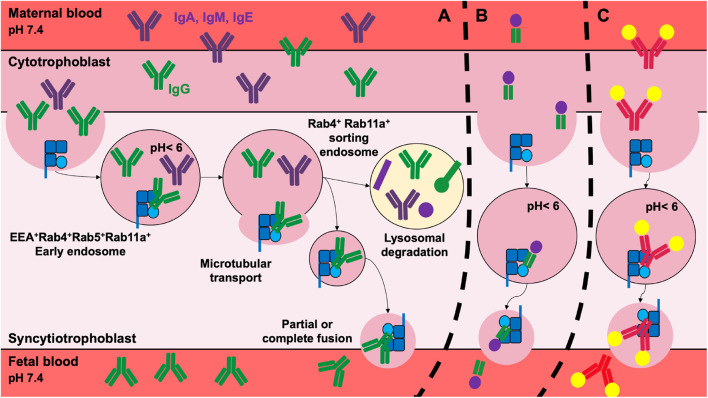Figure 2.
Transplacental delivery of maternal IgG and its therapeutic implications. (A) In the human, the transplacental delivery of maternal IgG starts during the second trimester of pregnancy. IgG cross the cytotrophoblast and syncytiotrophoblast cell layers to reach the fetal circulation. IgG transfer involves non-specific fluid phase internalization. IgG then colocalize with the FcRn in early endosomes where the acidic environment promotes FcRn/IgG interactions. Mature sorting endosomes transport FcRn/IgG complexes away from lysosomes, rescuing them from lysosomal degradation. IgG is released from FcRn into fetal blood by the partial or complete fusion of the endosome with the plasma membrane. After the dissociation of the IgG/FcRn complexes, FcRn returns to its original position. The transplacental delivery of Fcγ-fused proteins (B) such as FVIII-Fc or PPI-Fc, or of immune complexes (C) was validated for therapy in preclinical models in order to shape the fetal immune system. For simplicity, immune complexes are depicted as single IgG bound to two antigens.

